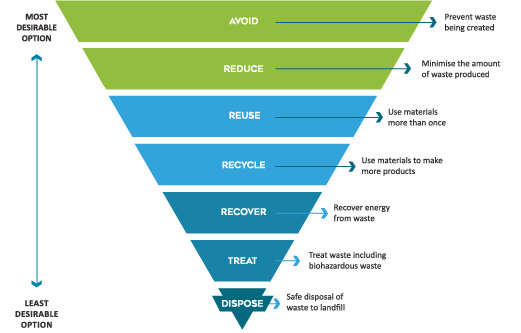The waste and resource recovery sector is constantly evolving, and Australians are increasingly joining the conversation about the value of the resources we create and how we can better track and manage them. Certainty around material flows is needed to encourage investment, and to grow domestic resource recovery and recycling infrastructure. Better managed material flows means more jobs and less pollution: a healthy waste and resource recovery sector is vital for a healthy environment and economy. To learn more about efforts being made to improve our data collection, please visit our Membership Portal.
Did you know:
- Australian’s attitudes about waste and resource recovery show a growing desire to see resources recaptured and recirculated within the economy
- In 2018–19, waste and resource recovery services were about $15.8 billion.
- The value added by waste-related activities was $4.9 billion, accounting for 0.3% of Australian gross domestic product (GDP).
- Around 36,000 people are directly employed in waste related activities
- For every 10,000 tonnes of waste that is recycled, 9.2 jobs are created
- Australian households spend between $2000 and $2500 per year on food that is thrown out rather than eaten
- Better waste management practices are crucial to ending ocean plastics, estimated globally to be upward of 150 million tonnes
The waste management hierarchy
The waste management hierarchy expresses a preferential order to managing waste and is embedded in many state and territory policy frameworks. State and territory governments have primary responsibility for managing end-of-life materials through legislation, policy, strategic planning, as well as permitting and licensing waste transport, storage, treatment, and disposal.
Meanwhile, local government and the waste and resource recovery industry only receive, and not create, waste in what is currently a linear - take, make, dispose - economy, and represent the end-of-pipe process in the entire supply chain.
WMRR supports the waste management hierarchy. To learn more about the individual levels of the hierarchy and how our working groups, Branches, and State Divisions are involved in the advocacy and policy work that we do, please visit our Membership Portal.
